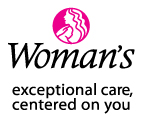With the onset of the pandemic, face coverings of all sorts have emerged. From bandanas and handkerchiefs to neck guards and rags, we’ve seen people get as creative with face masks as they have with birth announcements! However, it’s important to know that not all masks are created equal when it comes to COVID-19.
The purpose of the face mask
Masks are effective in reducing the spread of COVID-19 because they keep respiratory droplets from reaching others.
- You must wear the mask over your mouth AND nose – if you just choose to cover one, you are wasting your time.
- Depending on the material, style and fit some types of masks are more protective than others. Here’s a rundown of the most common types of non-medical masks and their effectiveness in reducing the virus’ spread.
(BEST) Cloth Masks
According to Duke’s study, the best kind of non-clinical mask is a two-ply, cloth mask. However, not all cloth masks are created equal either. The thicker the material the better, two-ply cloth is best, that still allows breathing.
Bandanas
Many people have started to use bandanas and handkerchiefs as a face covering. While these are convenient, Duke’s study revealed a bandana tied to cover the nose and mouth only offered slightly more protection than no mask at all.
Valve/Vented Masks
Valve masks are a type of N95 mask that have a one-way valve allowing exhaled air to pass through a small round or square filter disc attached to the front. Some commercially available cloth masks also feature a similar valve. These types of masks did not rank well in the Duke Study and the CDC has recently updated its guidelines advising against face masks with vents/valves.
(WORST) Neck Gaiters
Neck gaiters are tubes of performance fabric typically used for running outdoors. In a recent study done by Duke University, these face coverings performed the worst. In fact, they found gaiters actually produce more particles than speaking with no face covering at all.
Additional protective measures
While masks are vital to stopping the spread of the virus, it’s also important to remember that face masks don’t replace additional precautions but enhance them.
Remember to also continue:
- Clean your hands often, either with soap and water for 20 seconds or a hand sanitizer that contains at least 60% alcohol.
- Avoid close contact with people who are sick.
- Put distance between yourself and other people (at least 6 feet).
- Clean and disinfect frequently touched objects and surfaces daily.

